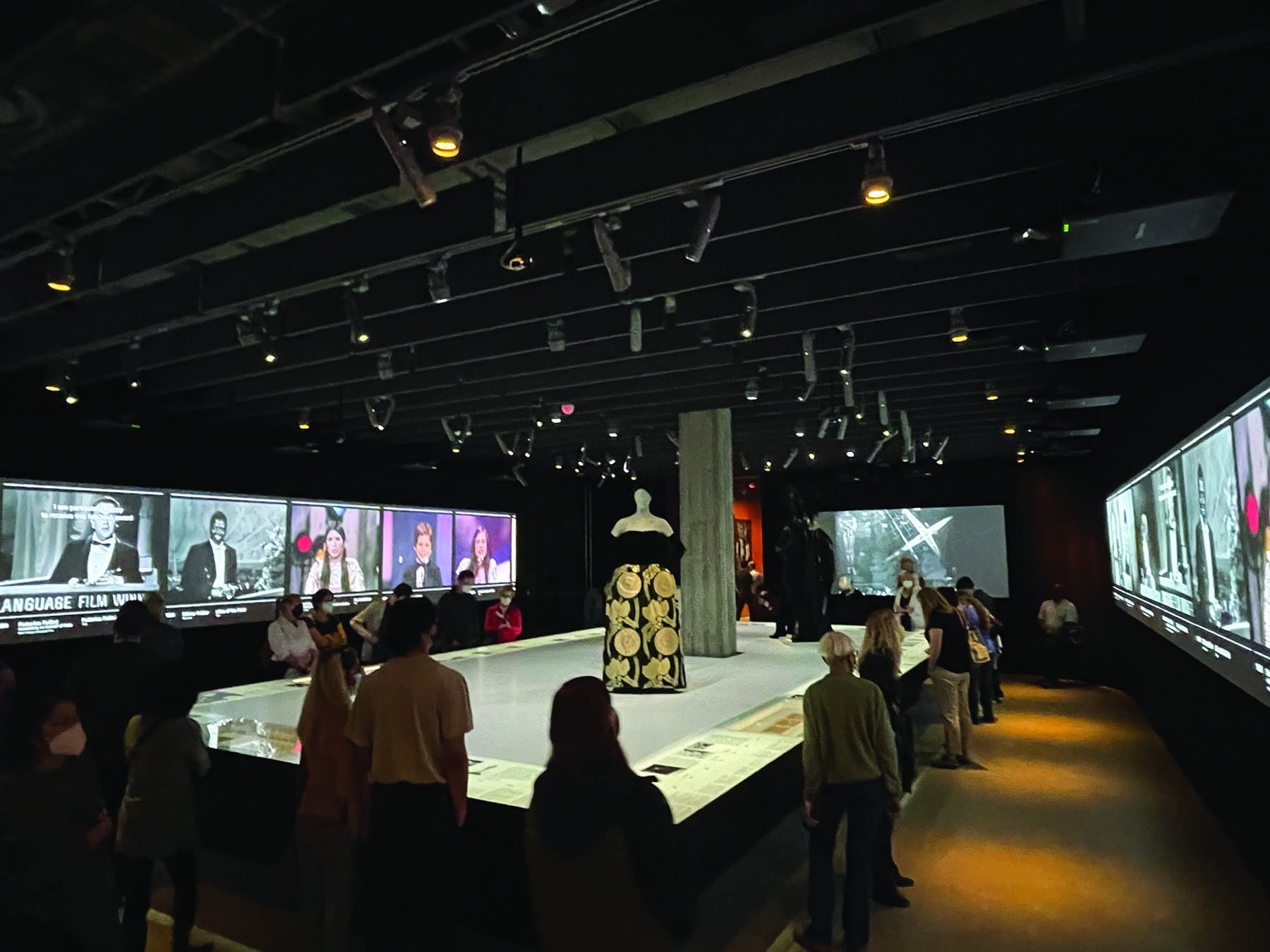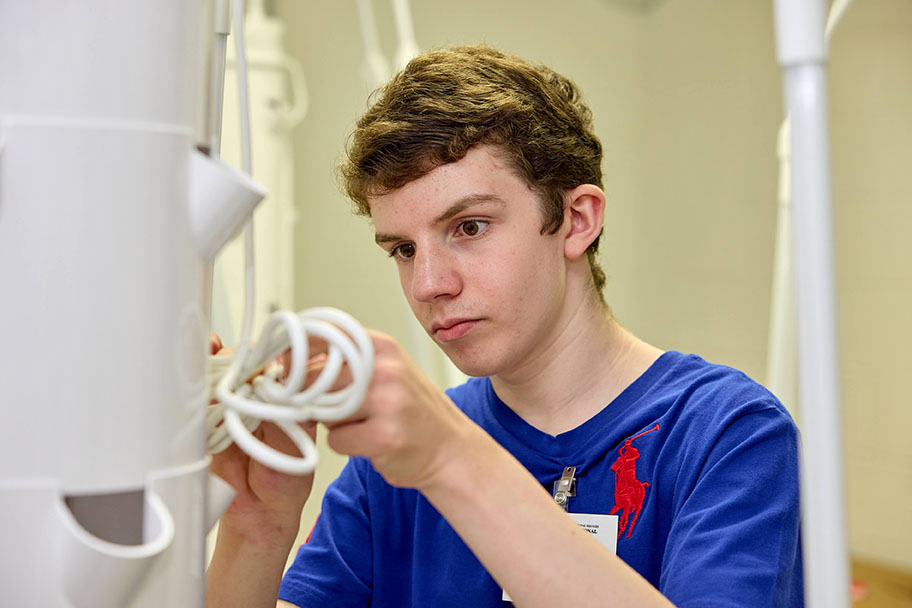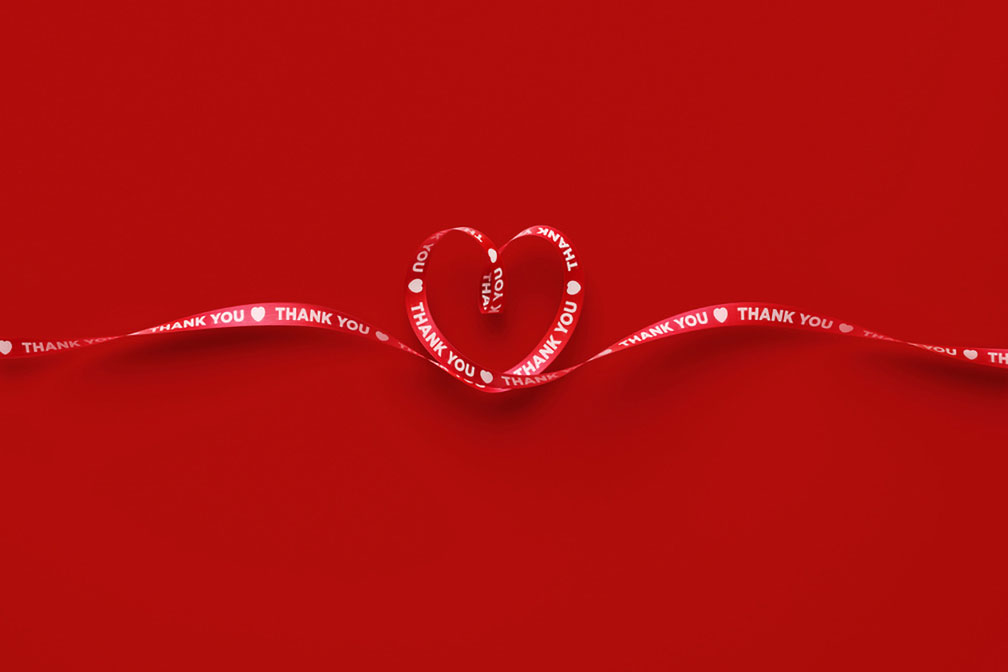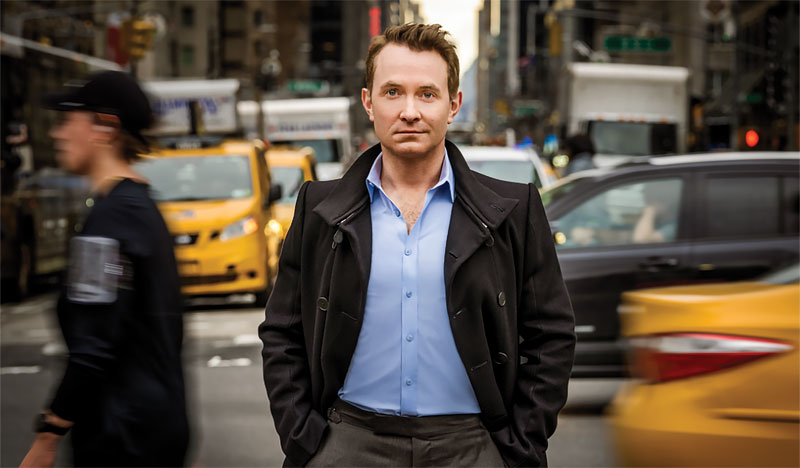
The new Academy Museum of Motion Pictures, which opened in September, is not just a celebration of the 93 films that have won Best Picture, or props behind glass. It also doesn’t shy away from some of the film industry’s most cringeworthy acts over the past century.
The renovated 82-year-old Saban building that houses the Academy Museum stands at the northeast corner of Fairfax and Wilshire, just across the street from the Petersen Automotive Museum. Inside, there’s a three-floor “Stories of Cinema” journey through the history and mechanics of film, and nearly the entire fourth floor is dedicated to a temporary exhibit on Japanese animator Hayao Miyazaki of “Spirited Away” and “Howl’s Moving Castle.” The top floor features the Dolby Family Terrace, which provides a view of the city from the Miracle Mile to the Hollywood Hills.
Here are a few reasons why you should visit the museum.
E.T. and Jaws in the flesh
One particular exhibit shows a plethora of fantasy and science fiction character suits and molds. You can look E.T. in the eyes, stand next to R2D2 and see a mold of Arnold Schwarzenegger’s bloodied head from “Terminator 2.” One of the last known “Jaws” sharks hangs from the escalator ceiling.
Old Hollywood

There is no shortage of homage to the early years of film. In the “Significant Movies & Moviemakers” section, the first film exhibited is “Citizen Kane,” widely considered to be one of the greatest of all time. Throughout the building are giant posters of the L.A. landscape long before freeways divided the city. “The Wizard of Oz” exhibit has Dorothy’s ruby slippers, previously unreleased promotional photos of the cast and the Tin Man’s oil can.
“Scary Movie 2” and “The Big Lebowski”
If you don’t dig old movies or Oscar winners, there’s still something for you at the Academy Museum. You can see the bathrobe worn by Jeff Bridges in cult favorite “The Big Lebowski” in the costume exhibit. In a depiction of the art of storyboarding, four sketches with directors’ notes are on display from the film “Scary Movie 2”—a film with a 14% rating on Rotten Tomatoes.
The Oscars themselves
Did you know that in 1994, Steven Spielberg was nominated for “Jurassic Park” and “Schindler’s List,” two very different films?
There is an entire room surrounded by video of some of the most memorable Oscars acceptance speeches. You can also see actual Oscar statuettes on loan to the museum, dating all the way back to the first Academy Awards ceremony in 1927. There is a detailed chronology of Oscar winners you can read, loaded with facts and firsts. Did you know that in 1994, Steven Spielberg was nominated for “Jurassic Park” and “Schindler’s List,” two very different films?
The controversy
There is no shortage of controversy surrounding the film industry and the Academy Awards themselves. The Academy Museum shows decades of instances that eventually led to the 2015 hashtag #OscarsSoWhite social justice campaign. These include a video playback of actress and activist Sacheen Littlefeather’s speech at the 1973 ceremony decrying the treatment of American Indians by the film industry, and the mixture of cheers and boos she faced from the crowd. In the makeup and hairstyling section, there’s a section on the shameful history of characters of color being played by white actors.
The beautiful artwork and photo ops
The art of making animation is at the forefront of several exhibits. Early drawings of Buzz and Woody from “Toy Story” are on display and are awe-inspiring when considering what the final product looked like. For an extra $15, you can hold an 8.5-pound replica Oscar statuette and get a video of yourself going on “stage” to accept the award.
The inspiration
On the 2nd floor, the “Director’s Inspiration” room is currently devoted to Spike Lee, and depicts the history and influence of his films over nearly 40 years. There’s an old film editing desk that must weigh thousands of pounds, featuring technology that fits snugly into the average iPhone and Android. There is also a scrolling wall of quotes from influential names in film history, chosen seemingly to inspire the next generation of filmmakers.
“The future of cinema is in the hands and hearts of young creators,” reads a quote from casting director Kim Coleman.






















 More news and opinions than at a Shabbat dinner, right in your inbox.
More news and opinions than at a Shabbat dinner, right in your inbox.